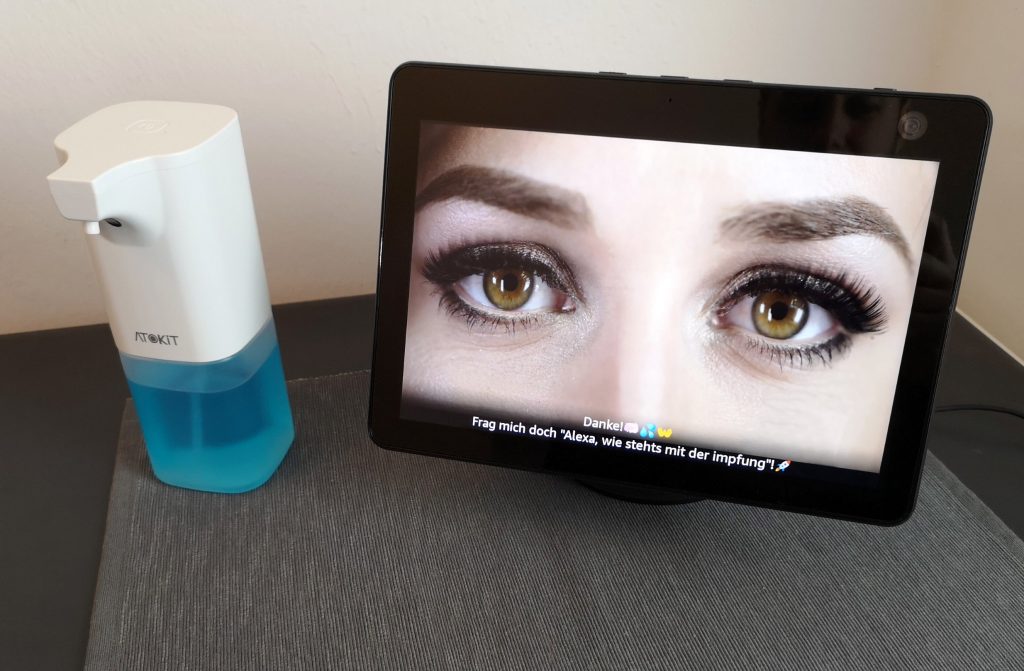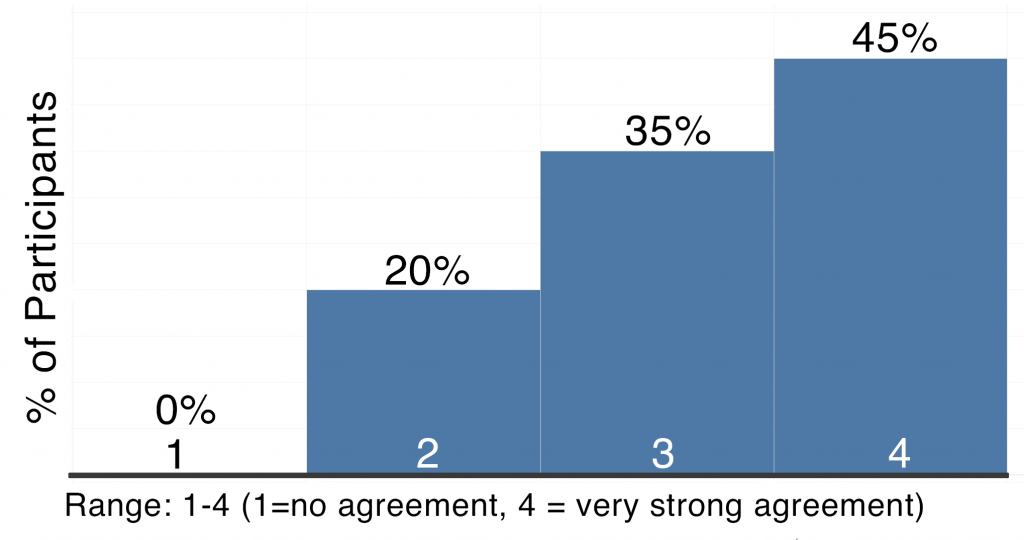Influencing hand hygiene compliance rates with a virtual assistant and watching eye effect
Aim and Research Question(s)
The aim of this thesis was to determine whether a virtual assistant in combination with the watching-eye effect can achieve an increase in the hand hygiene compliance rate.
 Figure1: Setup consisting virtual assistant and disinfectant dispenser
Figure1: Setup consisting virtual assistant and disinfectant dispenser
Background
In times of the COVID-19 pandemic, it is more important than ever that as many people as possible disinfect their hands as often as possible. The study “Impact of an Automated Hand Hygiene Reminder Alert on Healthcare Worker Hand Hygiene Compliance“ conducted in 2020 showed that the usage of an automated hand hygiene compliance reminder system led to a sustained total compliance rate of over 90 percent[1]. The watching eye effect and the direct (speech-)approach by a virtual assistant has the potential to further increase this positive influence through a subconscious approach[2].
Methods
A virtual assistant skill was developed for the device "Amazon Alexa Echo Show 10" which has a swivelling (tracking) screen. This setup speaks automatically to the user as they walk by and imitates eyes on the screen while asking them by voice to use the adjacent disinfectant dispenser. A test procedure in the corridor of an office building was simulated with a sample group of 20 patricipants (11 men / 9 women, aged 23-57, average age 34,8). The evaluation was carried out by means of questionnaires and semi-structured interviews.
Results and Discussion
While 55% of the participants stated that they had only been slightly influenced by a classic sign, more than 70% stated that they had been strongly or very strongly influenced by the virtual assistant in comparison.
 Figure2: "The virtual assistant has increased my willingness to disinfect my hands"
Figure2: "The virtual assistant has increased my willingness to disinfect my hands"
Conclusion
The results revealed that the direct approach was the greatest influencing factor. When asked whether the participants felt they were being watched, the watching eye effect was usually only rated as a minor influence. This cannot be interpreted as a negation of the watching eye phenomenon, as this effect is based on subconscious behavioural changes that the participants do not consciously perceived.
References
[1] Bishop et al - Impact of an Automated Hand Hygiene Reminder Alert (DOI: 10.1016/j.ajic.2020.06.027) [2] Pfattheicher et al - The watching eyes phenomenon (DOI: 10.1002/ejsp.2122)
